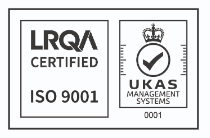Working under sub-contract to the EOSC-Secretariat project, AcrossLimits Ltd. of Malta and BoudaryLess s.r.l. of Italy conducted a wide-ranging study to develop possible sustainability options for the future EOSC. The final report named the ‘Vivus Study’ exposes the most likely options. The report has recently been approved and published online; it can be found here. [https://zenodo.org/record/4395885#.X_SDiOlKhTY].
What is EOSC?
At the forefront of scientific development and innovation, researchers and policy makers all around the world have long recognised the importance of data sharing in tackling wide-ranging societal issues such as: climate change, wildlife conservation, and medical research.
The European Open Science Cloud (EOSC) [https://www.eosc-portal.eu/] is an ambitious initiative, proposed by the European Commission in 2016, to actualise the vision of creating a global Open Science platform for sharing data and compute resources to accelerate research and innovation. EOSC, seeks to establish a new paradigm for transparent, data-driven science in an open distributed environment, built upon the principles of FAIR (findable, accessible, interoperable, and reusable) data. EOSC will eventually reach over 1.7 million European researchers and 70 million professionals in science, technology, the humanities and social sciences.
EOSC will circumvent many of the obstacles faced by researchers currently working in silos, by breaking down the barriers between them, helping to improve access to research results and to avoid unintended duplication of work.
What was the purpose of the Vivus Study?
The Vivus Study was one of the latest developments in the realisation of this project. This involved a study of different costings required for the actualisation of the project, as well as identifying potential business models and funding schemes that could be pursued to ensure that EOSC remains sustainable.
In particular, the study examined EOSC components and the relation between EOSC Core Services and the technical e-infrastructure that would deliver them. The study also investigated the pricing and funding sources that could quickly realise a ‘Minimum Viable EOSC’ (MVE). The study was conducted through mixed stakeholder interviews and desk research to generate models for the various aspects targeted. Throughout the study four reports were produced, the last of which (the Vivus Study) was recently published on October 31st 2020.
What did the Vivus Study find?
EOSC Core services are central to the provision of support services and organisational management common in any organisation, in business they are often referred to as cost centres. Users of EOSC will access the operational services (which, roughly, correspond to profit centres in business) which are supported by the Core services. The Vivus study mapped e-infrastructure services onto the two generations of Core service structures developed for EOSC (the Tinman and Iron Lady versions). In both cases, it was discovered that some Core service requirements had no corresponding e-infrastructure service offerings, while other Core services had abundant e-infrastructure services competing to supply the EOSC demand.
Through several meetings, study personnel were able to interact with several other workgroups, taking into account a wider range of views and perspectives. These meetings identified many challenges that must be addressed before EOSC can achieve success, with the common realisation that many of these issues could not be solved from within EOSC, for example, the report highlights the necessity for lobbying in favour of a single EU research market and the need to incentivise the participation of national entities.
Due to a lack of focus on individual service costs within institutional accounting practices, the study developed a matrix based on the costs of simple project-based resourcing, which was plotted against the relevant Core services. A nominal annual budget to support the operations of the EOSC Core was estimated and a model for translating Core service costs into Core service prices was identified. The study also identified the advantages offered by existing e-infrastructures, such as the simplification of the relationship maintained between EOSC and its service providers. These were rebranded as Service Aggregators, and the need to develop a detailed understanding of the income needed to sustain their operation was identified.
Recognising that there was little appetite within EOSC for a pay-per-use funding model, effort was deployed to catalogue additional sources of possible EOSC funding, ranging from EU level funds to national or regional funds, alongside support from business and charities.

What’s next for EOSC, according to the Vivus Study?
In order to build trust (associated with maintaining continuity of access) in its user communities, EOSC will need to be able to operate independently of project funding. This will require migration towards longer-term income streams, through the creation and deployment of a viable (non-commercial) business model. Two suitable models were identified, the Learning Engine and the Transaction Engine, from which a hybrid model was deemed to be required during the initial stages. The study developed recommendations on possible ways to capitalise upon these engines.
The EOSC-Core is a cost-centre that must be supported by income generated elsewhere. The MVE may be able to offer end-users a supporting and mentoring role to act as a mediator and advisor. These strategies are commonly designed as part of the Learning Engine approach and may become the source of future value-added services that address the concerns of policy-makers and funding bodies.
About AcrossLimits
AcrossLimits has been involved in the European research community for many years. It has been involved in EOSC related projects since the Pilot was launched in 2017. We are delighted with the breakthroughs being achieved in positioning EOSC to be able to advance international scientific development and empower researchers across the globe to tackle the world’s critical issues. We have also worked on many other projects at the forefront of scientific and technological development, such as:
- H-CLOUD [https://www.h-cloud.eu/] — a project aimed at developing a common strategy for the implementation of cloud computing at the European level.
- BioExcel [https://bioexcel.eu/] — a project aimed at preparing the Life Sciences research community for access to Exascale computing. In doing so, it will provide Life Sciences researchers with high-quality, user-friendly software, increase their expertise and skills, and strengthen the Life Sciences community. BioExcel has already made significant practical societally important contributions through early (March 2020) modelling of COVID-19 RNA dependencies and in the efficacy of Remdesivir in the fight against it.
AcrossLimits is wholeheartedly committed to the goal of facilitating scientific advancement for the benefit of our species and our planet. For more information about AcrossLimits and our projects, contact us at: [email protected].
 Alexander Camilleri
Alexander Camilleri
Science and Technology Writer and Project Officer at AcrossLimits



